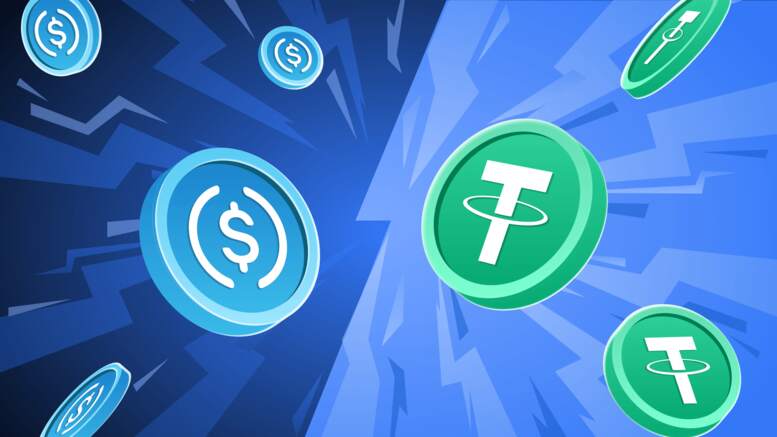In a landscape defined by volatility, shifting regulatory policies, and global macroeconomic uncertainty, stablecoins have emerged as one of the few constants in the crypto space—providing predictability, liquidity, and operational reliability across all layers of the digital asset economy.
Among them, two assets stand out as dominant: USDT (Tether) and USDC (USD Coin), which together account for over 90% of all stablecoin liquidity on-chain. But they are far more than just a digital version of the U.S. dollar. Today, USDT and USDC form the infrastructural core of crypto markets—powering everything from spot and derivative trading, to DeFi strategies, cross-border payments, and B2B settlements.
At Wealtris, we view these stablecoins as strategic assets and essential building blocks for a maturing digital economy. This article explores why USDT and USDC have become foundational to crypto finance, how they shape market liquidity, and the role they play in providing stability across increasingly complex decentralized ecosystems.
Stablecoins: More Than Just “Digital Dollars”
Unlike volatile assets like BTC or ETH, stablecoins are pegged to fiat currencies—most commonly the U.S. dollar—and are generally backed by reserves. Their value doesn’t lie in speculation, but in usability, interoperability, and consistency.
Stablecoins have become indispensable across use cases such as:
- Trading: As base pairs on centralized and decentralized exchanges;
- DeFi: Serving as collateral, liquidity, and unit of account;
- Payments: Replacing legacy rails like SWIFT or card networks in cross-border transactions;
- Business operations: Powering settlements and treasury management in Web3-native enterprises.
This blend of utility and stability has allowed USDT and USDC to become the primary transaction layer in crypto.
USDT and USDC: Two Approaches to Trust
While USDT and USDC serve similar functions, they are governed by two very different trust and transparency models.
USDT, issued by Tether, has historically targeted global crypto markets—especially in Asia—and is widely used on centralized exchanges. Its reserves include U.S. Treasuries but may also include commercial paper and other instruments. Tether publishes regular attestations, though not all reports are independently audited. As a result, USDT offers deep liquidity, but is sometimes viewed with caution in regulatory discussions.
In contrast, USDC, issued by U.S.-based Circle, emphasizes transparency and regulatory compliance. USDC reserves are 100% backed by cash and short-term U.S. government securities, and Circle undergoes regular third-party audits. This model has earned USDC broader acceptance among institutional users and U.S.-regulated entities.
At Wealtris, we follow a hybrid strategy—leveraging USDT’s high liquidity and USDC’s compliance-grade transparency depending on the use case, whether it’s DeFi execution, trading, treasury management, or enterprise settlements.
Liquidity: The Lifeblood of Crypto Markets
No DeFi protocol, exchange, or cross-chain bridge can function without deep, stable, and reliable liquidity—and stablecoins are at the center of it all.
USDT and USDC are:
- Core assets in liquidity pools on DEXs like Uniswap, Curve, and PancakeSwap;
- Used in low-risk stablecoin farming and automated yield strategies;
- Vital for arbitrage between centralized and Layer 2 exchanges;
- The base currency in NFT marketplaces, DAOs, and peer-to-peer protocols.
The depth and distribution of these stablecoins is a direct barometer of market health. When USDT/USDC liquidity contracts, it often signals a retreat of capital, a slowdown in activity, or broader risk-off sentiment.
Stability: A Psychological and Market Anchor
Crypto markets are inherently volatile. In that environment, stablecoins provide a refuge, allowing traders and investors to temporarily “park” funds without leaving the blockchain ecosystem.
But their role is not just defensive. Stablecoins also:
- Stabilize pricing in DeFiand make lending/borrowing viable;
- Reduce dependency on banks and traditional fiat infrastructure;
- Serve as a base layer for tokenized assets and programmable money, including CBDCs, RWAs, and synthetic derivatives.
Their presence allows crypto users to operate within a system of predictable value, even as the market moves rapidly.
How Wealtris Uses and Manages Stablecoins
At Wealtris, USDT and USDC are core infrastructure components across our platform and product suite:
- Used in fixed-income strategies and low-volatility portfolios;
- Powering multi-chain liquidity provisioning via stablecoin bridges;
- Supporting B2B settlement layers in USDC with full compliance alignment;
- Monitored continuously through internal risk audits, including reserve structure and issuer governance models.
For us, stablecoins are not just settlement tokens—they are key to designing resilient, transparent, and scalable Web3 financial architecture.
Conclusion
In a market where volatility is expected and trust is scarce, USDT and USDC have become foundational pillars of the crypto economy. These assets are not merely tools for value storage—they are essential for enabling liquidity, interoperability, and financial predictability across the decentralized financial stack.
At Wealtris, we view stablecoins as critical primitives of the on-chain economy. And we continue to develop infrastructure and solutions where stability is not a limitation—but a strategic advantage.
Read More: H5 Firekirin

